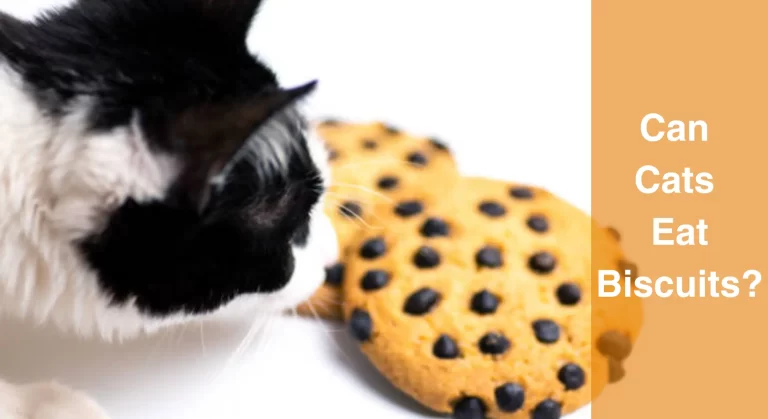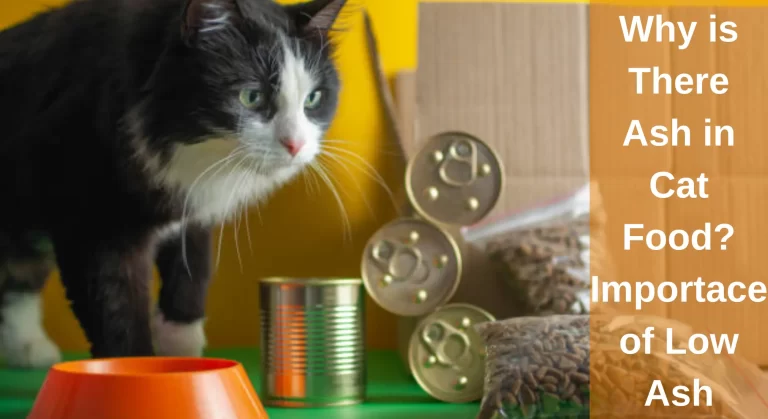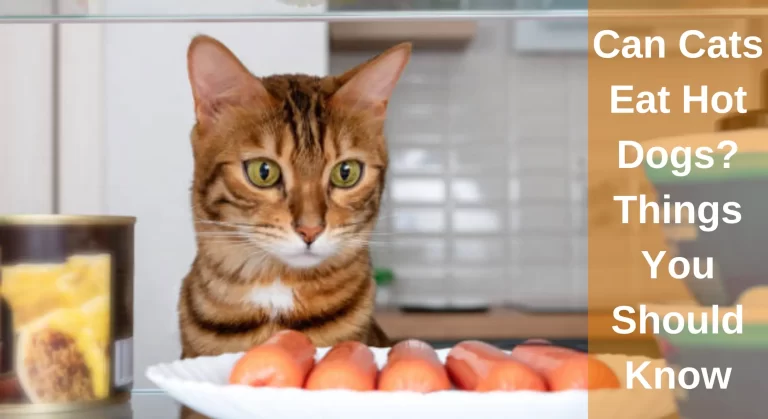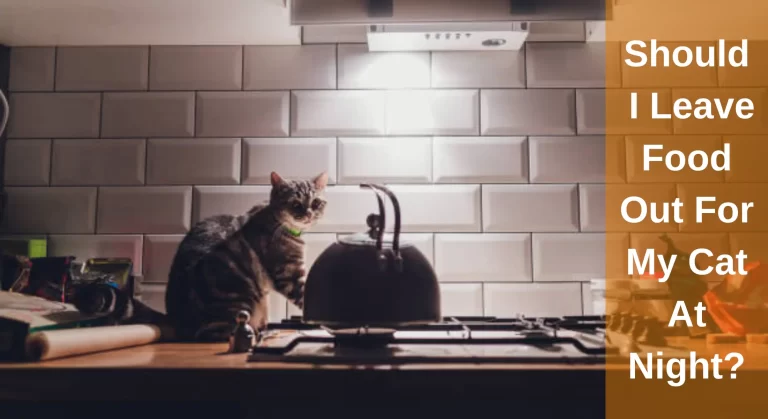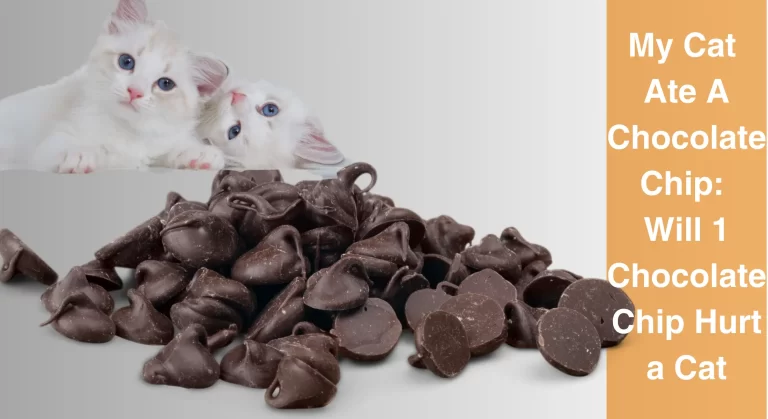Do Kittens Need Wet Food? All You Need To Know
In the early stages of their development, kittens are supported by their mother’s milk. However, once they are about 4-8 weeks old, they begin to wean off their mother’s milk. From this point on, they are under your control as far as their diet is concerned. Providing them with everything they need is essential for healthy development as they transition to solid foods.
It is imperative that kittens consume a specialized diet rich in nutrients to facilitate their optimal growth. Most people frequently get the question, “Do kittens need wet food?”
Yes, kittens require a specific diet of wet food or softened dry food to support their astronomical pace of growth. It takes time for kittens to switch from their mother’s milk to solid meals. Wet food eases the transition while guaranteeing that your cat receives all the nutrients required to develop into a robust adult cat.
Your cat’s health is very important to you as a cat parent. Proper feeding plays a key role in his development into a healthy adult. Here are some other helpful tips for keeping your kitty healthy, along with the answer to that question.
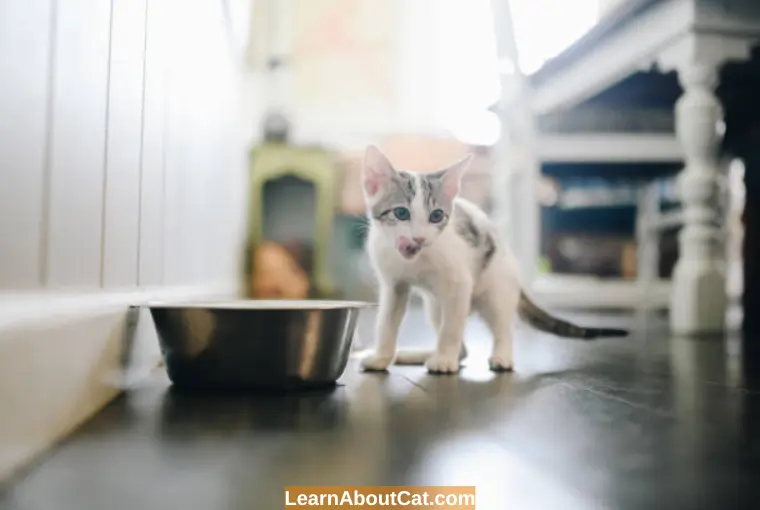
Why Do Kittens Need Wet Food?
Regardless of how you intend to feed your kittens in the future, they must be weaned on wet food at this time. Kittens must first be fed wet food when they begin to wean themselves off of their mother’s milk, as this is influenced by a number of things, including:
1. Kittens Can’t Chew Properly
Kittens’ teeth are so underdeveloped when they are between 4 and 8 weeks old that they might not be able to chew dry food effectively.
Extreme efforts must be made to transition from a diet that only consists of mother’s milk or a milk substitute to one that also includes dry, crunchy kibble. Even if you want to switch your kitten’s diet entirely to dry food in the future, there must be a wet food transition period until she is 8–10 weeks old.
2. To Keeps Kittens Hydrated
Because wet food is so moist, it will tempt your cat to drink more water on a wet food diet. Kittens have never had to drink water before, and cats are known for not drinking a lot. Mom’s milk had previously satisfied all of their liquid needs.
3. Encourages kittens to Eat
Wet food is typically more flavorful and odorous (in a good way!) than dry food. Using wet cat food is a great approach to give kittens the additional push they might require while switching to solid food. Wet food is frequently advised for cats that have lost their appetite since it will encourage them to eat more.
4. Helps Maintain a Healthy Weight
When using wet food, your kitten can be fed the correct amount more efficiently.
Dry food is more compacted and has more calories per unit than wet food since it lacks moisture. As a result, giving your dry kitten food will improve the chance that she’ll gain unnecessary weight.
Also Read: The Ultimate Guide to – How Much to Feed a Kitten?
How Much Wet or Dry Food Should a Kitten Eat?
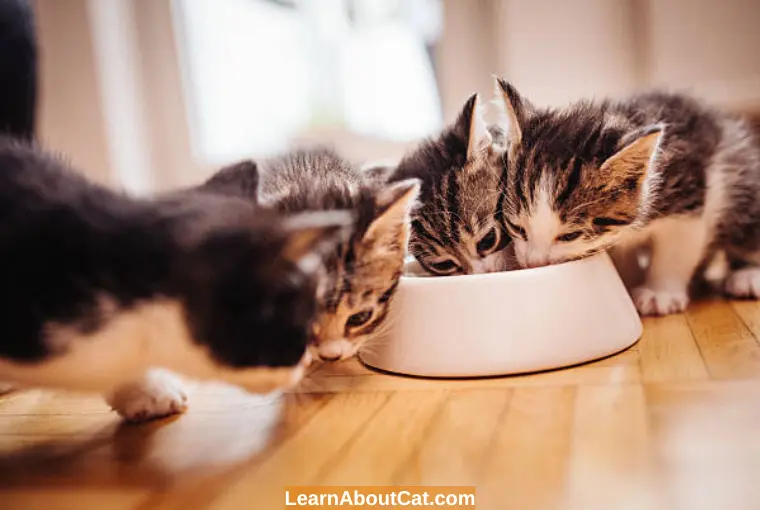
Firstly, you should look at your cat’s food label to find out how many calories are in each kilogram, a can of wet food, and a cup of dry food. To determine how many calories to give your kitten each day, divide the meal’s calorie count by the kitten’s caloric needs. Divide this total by the number of meals you intend to serve each day to arrive at the serving size for each meal.
According to the stats, you should provide your kitty 327 kcal each day. You may calculate the amount of wet food to feed your kitten by multiplying the 327 calories per day by the 108 calories found in each can of wet cat food.
Canned food provides them with the nutrition they need to grow properly; without it, they will have difficulty growing. Feeding your kitten canned food twice a day is sufficient if you are feeding both dry foods and canned food. In the case of canned food only, they should be fed four times a day.
Also, Check Out: How Long Should Kittens Eat Kitten Food?
A Healthy Diet for Kittens: A Kitten’s Nutritional Needs
In cats, the kitten period lasts for 0 to 6 months. Kittens will grow to a size of around 75% that of an adult throughout this time, which indicates that development occurs in this short period of time. The fact that kittens require a special diet to support their rapid growth shouldn’t come as a surprise.
You must be aware of your kitten’s nutritional requirements in order to select the best-wet food for them.
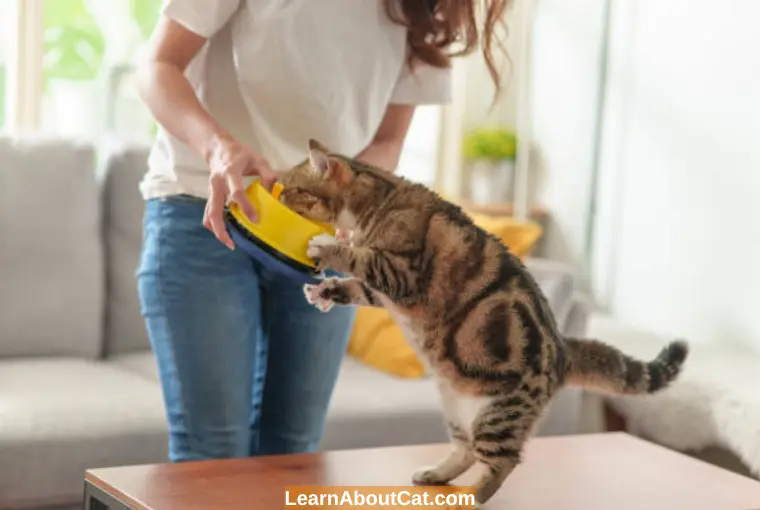
You should consider the following factors for your cat’s healthy diet:
- Diet must bolster their defences and promote healthy growth.
- Create the foundation for a healthy diet
- Reduce future obesity
Which Nutrients, Why, and How Much?
A kitten’s food should contain the required levels of protein (35-50%), fat (18-35%), and calcium (0.8-1.6%) to support healthy development.
Especially while weaning, kittens require more protein in their diets than adult cats do. As a result, meals meant for adult cats often include less protein than diets created specifically for kittens. They must include high-quality protein derived from animals, just like any healthy cat diet.
A kitten’s diet must include fats since they are a great source of energy. Fats also contain the fat-soluble vitamins A, D, E, and K. Their eyes and minds develop more quickly thanks to these vitamins. But be careful; giving a cat a diet high in fat will lead to an unhealthy cat.
The mineral calcium aids in the development of bones and teeth, blood clotting, muscle contractions, and cell neurotransmissions. As a result, much like kittens, adult cats should continue to consume calcium at 0.6% of their diets as a reduced amount causes thyroid issues.
Other minerals or vitamins include P, Mg, E, or Vitamin C, which promote the kitten’s growth. Kittens might not obtain enough of the other nutrients, regardless of how much protein they are provided.
Check Out: When Do Kittens Start Eating Food And Drinking Water?
How Does the Dietary Requirement of a Kitten differ from that of an Adult Cat?
The first few weeks of a kitten’s life are typically growing stages as its weight becomes doubles. For it to continue its quick development and high levels of activity, your kitten may need three times as much energy as an adult cat. Kittens have high energy requirements, making consuming enough calories in a single meal harder.
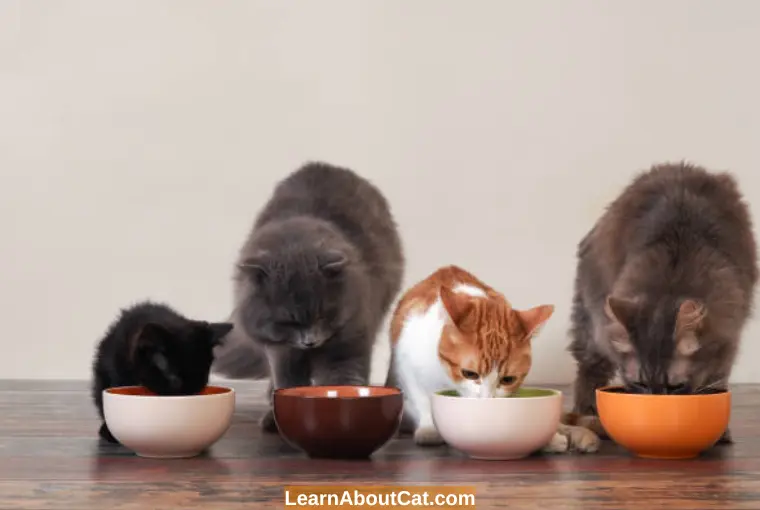
The bulk of vitamins, certain fatty acids, and lipid requirements of kittens are comparable to those of adult cats. However, protein, amino acids, minerals, and some vitamins are more important for kittens. They take 30% of their energy from protein.
Due to these reasons, the majority of experts suggest feeding your cat specially-made kitten food until it is one year old. Even though some cat foods claim to be suitable for cats of all life stages, including kittens, your kitten shouldn’t consume these unless feeding studies support the label claim. Also, don’t forget to provide a lot of fresh water; cats of all ages need this for good health.
Intresting Reading: Why Is My Cat Always Hungry But Skinny?
How Often Should Kittens Be Fed?
The majority of kittens should have food provided both during the day and at night until they are 4-6 months old. Give your kitten 4-5 meals daily, depending on their caloric demands. You should also give them high-quality dry kitten food, such as grain-free dry cat food. Unless your kitten is really ill, it’s usually a good idea to switch to a meal-based feeding schedule around this time.
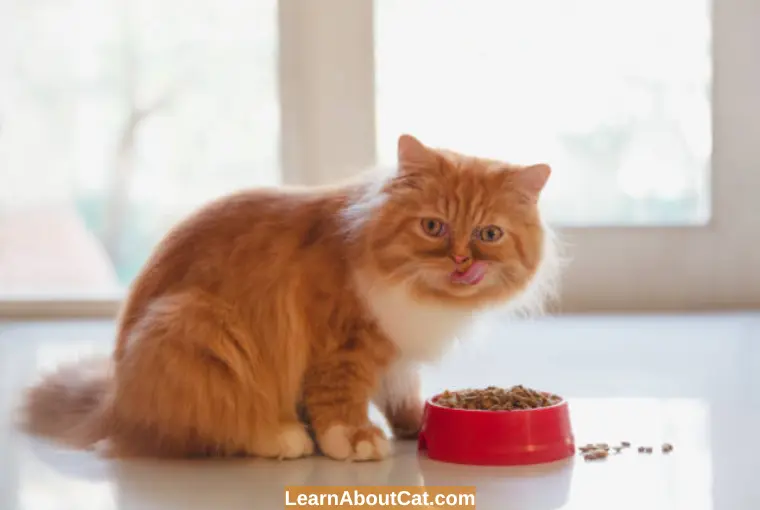
- Cats often eat a number of little meals throughout the day. For instance, for 4-6 months, kittens should get food at least thrice daily.
- By the age of 10 months, a baby should be eating two meals each day.
- The ideal number of meals each day is up to six little ones.
- You may use an automated timed feeder, which comes preloaded with six metered meals daily.
Feeding Dry and Wet Cat Food side by side
Wet cat food offers several significant nutritional advantages over dry cat food. Feeding cats wet food can help them stay hydrated because they are famously lousy water drinkers. Recipe for Instinct Kitten Real Chicken Pate without grains A high-quality wet kitten food that is more suited to a kitten’s nutritional needs than dry food is Natural Wet Canned Cat Food, which tends to include more meat and protein and fewer carbohydrates than dry food. Many medical professionals advise cats to consume largely, if not fully, wet food due to these factors.
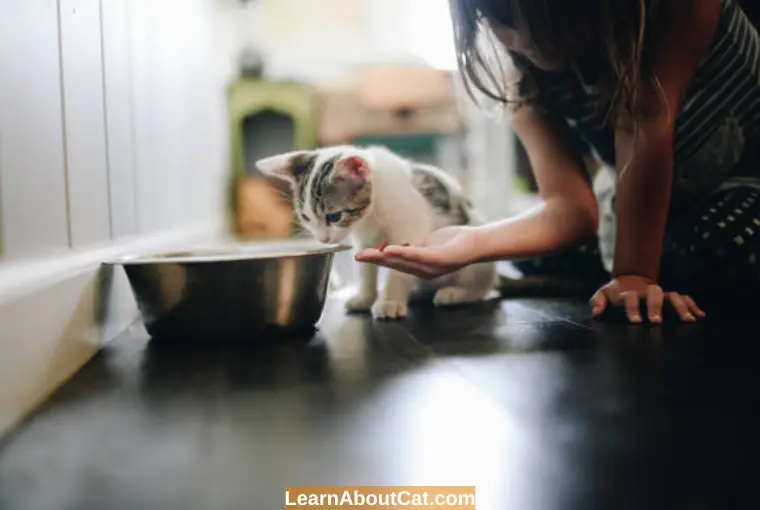
Although most kittens do best on wet canned food, dry food also has certain advantages. The food puzzles, which offer enjoyment and activity, also employ kibble. From an early age, cats have strong preferences for how their food should taste and feel on their lips. Give your cat a variety of foods if you want to have all your selections available.
Frequently Asked Questions
How should I feed my cat to get the most nutrition?
Your kitten should start off on wet food and progressively transition to dry food as it gets older. Include some moist meals on a regular basis, including wet canned food.
Never feed your puppy or dog food to your kitten because it will be deficient in taurine, a protein that cats require but can only obtain via diet.
Should I feed my kitten wet food or dry food?
Very young kittens should include some canned food in their diet. Short kittens’ little teeth make it difficult to chew dry food effectively. They won’t get enough nutrition to grow correctly without some canned food.
When can kittens eat only dry food?
For kittens over seven weeks of age, dry kibble is recommended. You should gradually reduce the amount of wet food you mix with your kittens’ dry food if you plan on feeding them only dry food in the future.
Do kittens need wet food everyday?
It is recommended that kittens be fed wet food in order to keep them happy & healthy while they are growing up. Wet food contains the essential moisture kittens need to thrive.
During the first six months of their lives, kittens should also be allowed access to food at all times and at least three times a day should be provided.
What happens if kittens eat dry food?
Dry food free-feeding allows kittens to consume food as often as they like throughout the day, making it more likely that they will receive adequate nutrition. Additionally, dry food keeps your kitten’s teeth and gums healthy.
Final Thoughts!
Most kitty felines tend to live happily when a balanced diet is provided to them. Their diet may include dry as well as wet food. But until they are 8–10 weeks old, weaned kittens need kitten-specific wet food or softened dry food. This will make it easier for them to switch to solid food and provide them with the energy they need to maintain their rapid rate of growth.
Although reading this text would suggest that feeding kittens are a bother, it isn’t. The best way to feed your cat is to select premium food that has been designed to support healthy and optimum growth in kittens.
Calculating how much to feed a kitten is challenging. Because they expand so fast, even after you determine the right amount, it will change before you realize it. The amount of food you feed your kitten needs to be adjusted frequently, but the effort is worthwhile. One of the methods to ensure that your kitten grows up into a healthier adult cat is to feed it the proper quantity of food.
Related Posts:
Who is Isabella?
My name is Isabella, and I am a dedicated and knowledgeable cat enthusiast. With years of experience caring for cats and a deep love for felines, I made a mission to help other cat lovers navigate the challenges of cat ownership.


